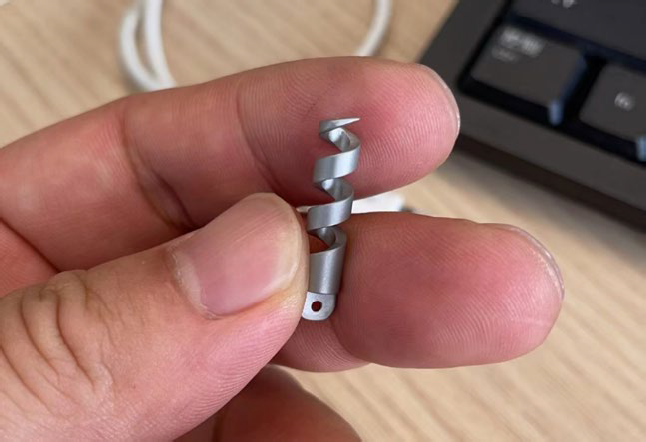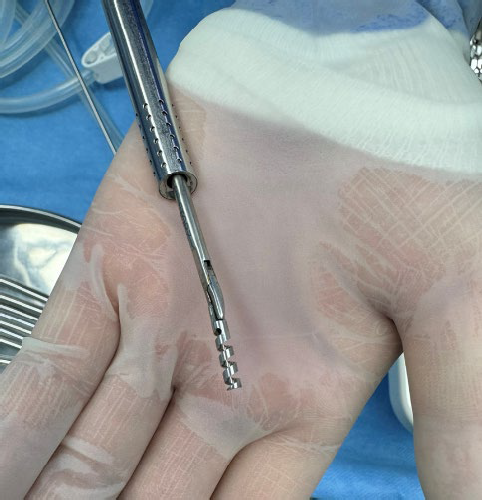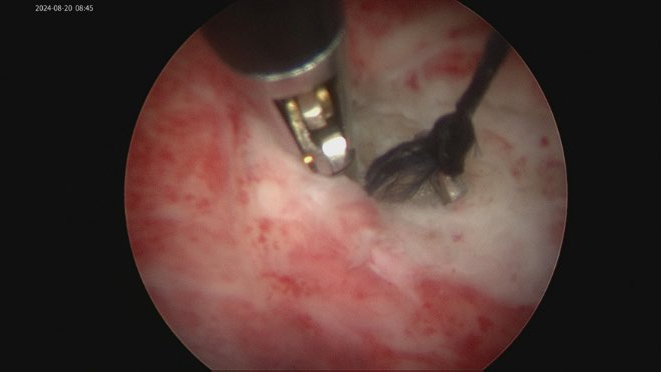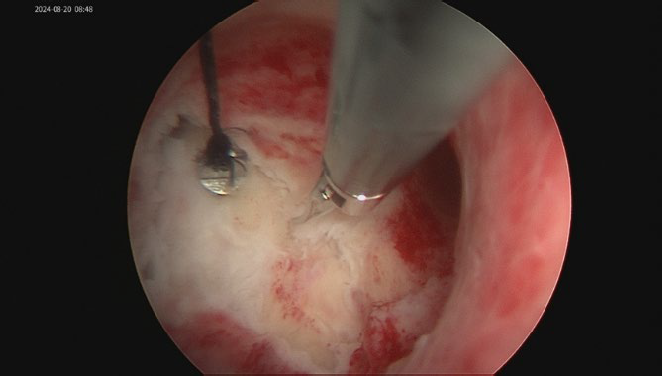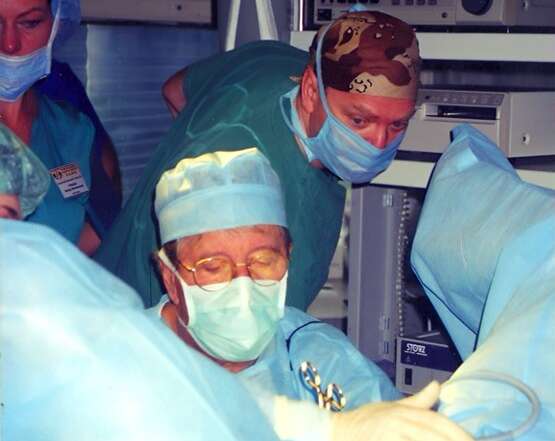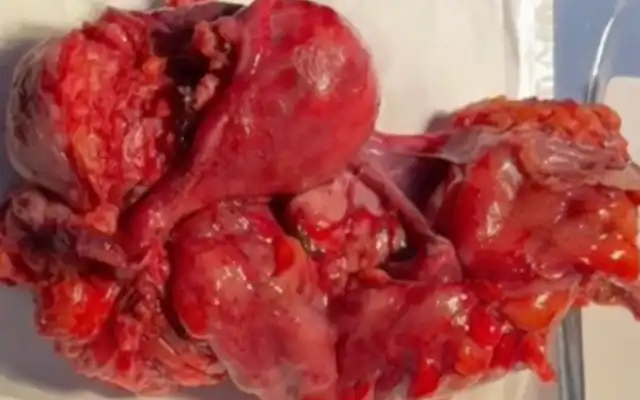Authors / metadata
DOI: 10.36205/trocar6.2025011
Abstract
The author presents a so far non evaluated procedure assisting hysteroscopic myoma resection introducing a drill for traction.
Surgical Technique
For FIGO type 2 submucosal leiomyomas, traditional hysteroscopic resection techniques pose significant challenges due to the deep myometrial embedment of the tumors, which increases the difficulty of resection compared to type 0 or 1 leiomyomas. Large type 2 tumors further elevate risks of complications such as water intoxication, uterine perforation, or incomplete resection. To address these challenges, a specialized hysteroscopic myoma drill inspired by laparoscopic myoma drills was developed. Unlike laparoscopic counterparts, this device retains only the drill head and incorporates a flat grip and threading aperture at the tail end (Figure 1).
- Anchor Placement: A 7-0 silk suture is threaded through the drill’s aperture. Using a 3mm needle holder via the cold-knife hysteroscope channel, the drill is inserted into the uterine cavity, rotated to engage the tumor, and secured (Figure 2).
- Traction and Dissection: The suture is gently pulled to externalize the leiomyoma. A 3mm dissector or scissors is then introduced to dissect the tumor from the myometrium in a laparoscopic-like manner (Figure 3-4).
- Fragmentation and Extraction: Once the majority of the tumor is mobilized, it is fragmented into smaller pieces using scissors. The cervix is dilated as needed, and fragments are extracted with a ring forceps. This innovative approach significantly reduces the complexity of type 2 leiomyoma resection, particularly for fundal tumors. The drill’s longitudinal traction enhances exposure and dissection, minimizing risks associated with traditional methods.
Editorial remark: This is an experimental approach that is published in the sense of new ideas. The application is not recommended before the scientific assessment.
